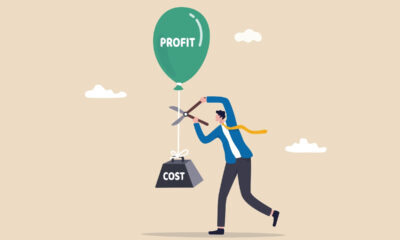These days it seems like everyone is rushing to market with something “disruptive” or “epic.”
They promise that their product or service
will fundamentally change the way we eat, sleep, do business, you name it. But
you don’t need to do something completely revolutionary to change the world.
You just need to be different than everyone
else. And you need to do that different thing better.
If you’re vying to position yourself in a category that already exists, you’ll find yourself on an endless hamster wheel, running at full speed without really getting anywhere.
Take the story of Debra Sterling, the founder
of GoldieBlox, who studied engineering and product design at Stanford
University, Debra saw the lack of toy building blocks for girls as a golden
opportunity to fill an unmet need and
expose young women to the field of engineering. After she faced rejection from
the traditional toy industry and the male-centric world of venture capital,
Debra brought her idea to the masses by starting a massively popular
Kickstarter campaign. And today, her company has sold more than one million
toys worldwide.
Because she wrote her own rules rather than
chasing share of the existing market, she successfully reimagined the toy
category from a brand new, female point of view.
And she dominated the category.
This stems from my podcast
episode with Praxis students about category design. Here’s the most
important thing from our conversation:
Focus on category
design, not category creation.
Once you’ve found your place in the market, your next step
is to bare your teeth and niche down.
Get this: it’s not the first mover who wins.
No, the winner is always the first company that convinces
the world to see the problem and acknowledge
their solution. It’s the guys who use their unique point of view to drive
the world from where it is today to where they want it to be.
One Praxis student brought my attention to a great example
of this: Hydrox versus Oreo.
Hydrox was a cream-filled sandwich cookie that debuted in
1908. If you’re not familiar, that’s probably because just four years later,
Oreos—an incredibly similar sandwich cookie—came onto the scene. They were an
immediate success. So popular, in fact, that people forgot about Hydrox, which
was eventually perceived as the imitator of Oreos, rather than the originator.
This story illustrates the importance of category design
over category creation. Oreos didn’t create the cream-filled sandwich cookie
category, but still ended up relegating Hydrox to an obscure footnote in
history.
Remember that you don’t need to create an entirely new
category—you just need to design it differently than your predecessors.
Then calculate your
unique “Magic Triangle.”
One of the biggest, most boneheaded mistakes I’ve seen in
the business world is the belief that the best product wins.
I’ve actually heard CEOs say, “We make shit, we sell shit,
and everything else is bullshit.” But this mentality of “my widget is
better than your widget” is for followers, not leaders.
Legendary success requires that you design a great product
and a great company and a unique category. We call this
winning triad the Magic Triangle[1] [2] of product design.
Many entrepreneurs spend the bulk of their time obsessing
over what they plan to sell (their product design) and their business model
(their company design). But focusing on these inputs without thinking long and
hard about the category design isn’t a winning strategy.
If you and your company don’t stand for something unique,
you’ve relegated yourself to mediocrity.
Your business may become profitable, but it won’t ever
become truly legendary.
Remember: you have
to convince the world.
But even with your magic triangle, success isn’t
guaranteed because products can’t speak for themselves. Think about the wheel,
which was originally used for pottery. It took 300 years after the wheel’s
invention for anyone to use it for transportation.
Someone needed to step up and teach the world a new way to
look at the wheel.
Likewise, you need to become an evangelist. Luckily,
spreading the word about your product won’t be hard if you’ve done category
design correctly. It should be easy to articulate how your invention solves a
problem that people didn’t even know they had.
And to convince the world of your product’s merit, timing
matters.
Was the timing already right for Cubism, or did Picasso
make the timing ripe for Cubism? Well, because he got the category design right
and nailed his magic triangle, he got the world to believe that Cubism was a
new kind of art.
And he found the world was ready and receptive.
It’s hard to predict when something will take off, but
there’s a classic analysis technique that states: Just ask “why” seven times.
By delving deeper into the reasons why the world needs a new solution, you
force yourself to stay open and keep digging until you hit “paydirt.”
By shifting your mindset in this way, you have the power
to move the needle, to change how the world thinks about things.
Legends have the courage to be different. If you focus on the exponential value of what makes you different rather than the incremental value of what makes you better, you’ll be well on your way to excellence.



